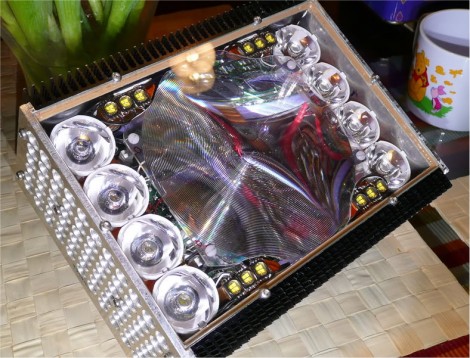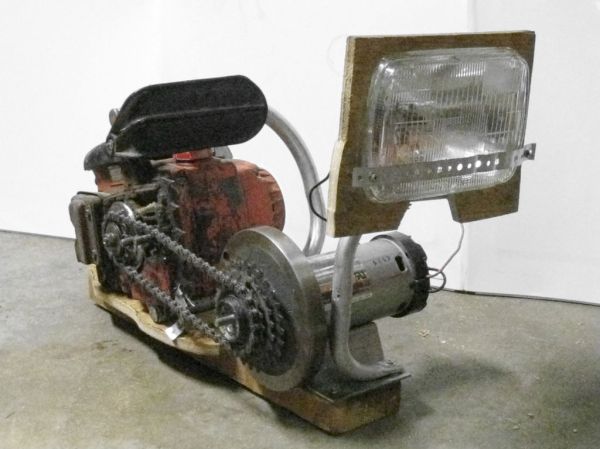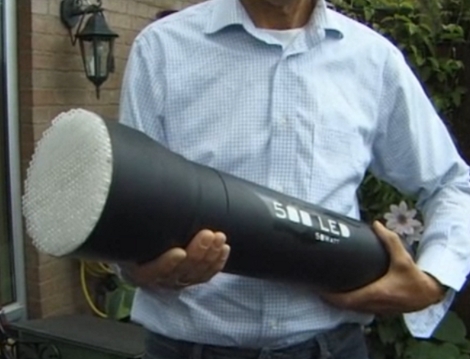
[Holzleim’s] flashlight build is quite impressive. And the rise and fall of the hardware is quite a story. He designed it as a handheld light, relying on batteries to power a multitude of high-power LEDs inside.From the collection of four 5350 mAh lithium polymer cells he was able to achieve a peak power output that surpasses 500 Watts!
Projects that make use of these powerful LED modules have heat dissipation as a major design element. With this in mind, [Holzleim] used large bars of copper as a mounting surface for each group of modules. The size and thickness of these bars made it difficult to use traditional soldering techniques to affix the bodies of the modules so he ended up using a clothes iron to ramp up the temperature high enough to reflow the solder. Once mounted, most of the LEDs were paired with optics, including that Fresnel lens at the center, to help focus the light.
To keep the batteries topped off, [Holzleim] designed his own external charger which can run off of mains or from a car’s electrical system. Unfortunately he must not have included a way to monitor the battery temperature because one of the cells failed, causing a fire that burnt out the components inside the flashlight. Luckily his wife was home at the time and got the failing device outside where it didn’t cause more damage. We’ve linked to his posts regarding the charging system, the properly functioning light burning paper with its beam intensity, and his sad announcement about the fire after the break.
Continue reading “The Life And Death Of A Fantastically Brilliant Flashlight”
















